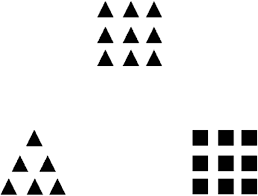Education
Learning and Social Distance
We learn differently from people depending on how close we are to them.
Posted February 4, 2016

People have the chance to learn from many different people. Some of them are people who are socially close to you like family, friends, and members of your community. Others are people who are more socially distant, like strangers, people from other countries, or people who lived in the past. Does the distance between you and the person you are learning from affect what you learn from that person?
This question was explored in a paper in the January, 2016 issue of the Journal of Personality and Social Psychology by David Kalkstein, Tali Kleiman, Cheryl Wakslak, Nira Liberman, and Yaacov Trope.
Previous research (which draws on construal level theory) developed by Nira Liberman and Yaacov Trope suggests that people think about things close by to them more specifically than things more distant. They think about things more distant more abstractly than things close by. This distance can be distance in time, space, or social distance. This theory suggests that when people are learning from someone socially close to them, they may focus on more specific information than when they are learning from someone socially distant from them.
In one study, college students learned to classify a number of items. The items to be classified were large shapes (triangles or squares) that were constructed from smaller shapes (triangles or squares). In the learning part of the study, if the large shape was a triangle, then it was constructed from small squares. If the large shape was a square, it was constructed from small triangles.
Participants observed someone else classify the items. They classified the large squares made of small triangles into one category and the large triangles made of small squares into another. The experimenters manipulated the social distance between the participant and the person they observed. In the near condition, participants were told that they were observing the responses of someone who went to the same school. In the far condition, participants were told they were observing the responses of someone who went to a rival school.
Notice that these items allow people to focus either on specific information (the small shapes) or more abstract information (the large shapes made from the smaller shapes).
After watching someone else classify the items, participants were given a number of items to classify for themselves. These items consisted of a large square or triangle that was made up of smaller shapes of the same type. So, for these items, if participants focused on the small shapes when observing the other person, they would classify the new item differently than if they focused on the large shape.
Participants who watched someone from the same school tended to classify new items based on the small shapes. Those who watched someone from a rival school tended to classify new items based on the large shapes.
This finding (which was obtained in a few studies in this paper) suggests that people learned more general information from someone socially distant from them than from someone socially close to them.
Another study used a quite different method to test the same idea. In this case, participants listed ten people they knew and ordered them by how close they felt to them socially. Then, they were either asked to list either a specific behavior they would like to learn or a general trait. Finally, they were asked to indicate which person on their list they would like to learn this thing from. People trying to learn a specific behavior tended to select someone socially closer to them then people trying to learn about a general trait.
In another study, participants were told that they were going to learn about a health topic (antioxidants). They were either going to learn a relatively specific aspect (how to get more antioxidants in your diet) or a relatively general aspect (why antioxidants matter). They were told that research assistants had selected two articles from the internet that they judged to be good sources. One was posted earlier that day, while the other was posted two months earlier.
Participants could choose which one they wanted to read. Participants who were asked to learn the more specific aspect (how) preferred the more recent article. Those asked to learn the more general aspect (why) preferred the older (more distant) article.
Putting all of these results together, it seems that social distance affects what kinds of information people learn from other people. People are also sensitive to this difference (at least implicitly), because it affects the sources they want to learn from.
These studies are particularly interesting in light of the number of ways that people can learn from others in the internet era. In previous generations, people often needed to learn from others who were close by in space and time (except when they were reading books). Now, there are more opportunities to watch videos and even attend classes over large distances. This work suggests that people who want to learn general principles might benefit from selecting sources of information that are distant from them.
Follow me on Twitter.
And on Facebook and on Google+.
Check out my books Smart Thinking and Habits of Leadership
And my latest book Smart Change.
Listen to my radio show on KUT radio in Austin Two Guys on Your Head and follow 2GoYH on Twitter and on Facebook




